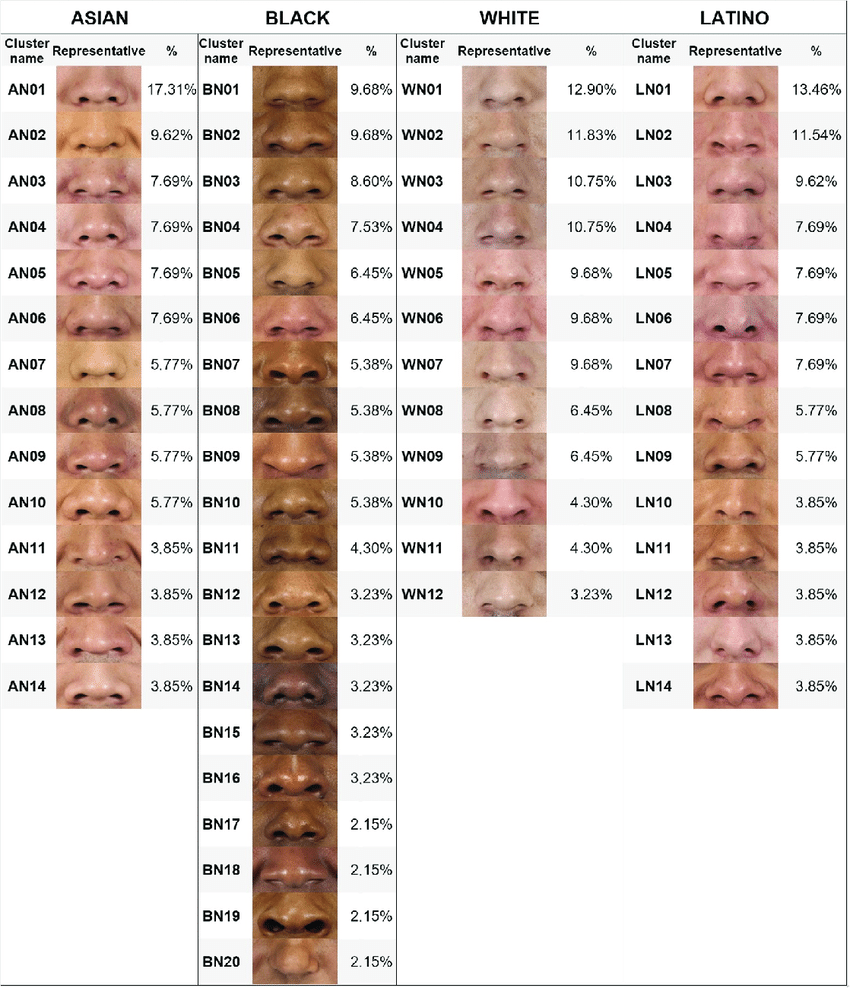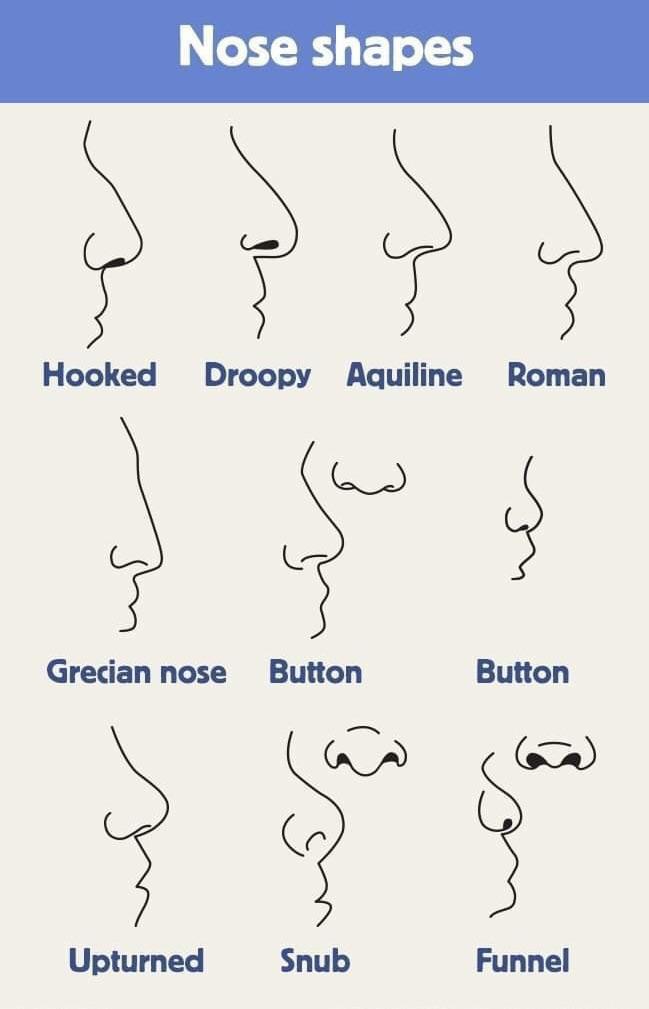Table of Contents
Understanding the Different Parts of the Nose
The human nose, a vital component of the respiratory system, not only filters, moistens, and warms the air we breathe but also provides us with a sense of smell. Interestingly, the shape and size of the nose can also hint at an individual’s ethnicity. This article delves into the anatomy of the nose and explores the different types of nose shapes across various races.
The main parts of the nose include the nasal dorsum (bridge), nasal septum, nasal tip, columella, and sinuses. Each of these parts plays a unique role in the functioning and appearance of the nose.
Types of Nose Shapes
Understanding your nose shape is crucial, especially if you’re considering rhinoplasty or other nose surgeries. Here are some of the most common nose shapes in the world:

Nose Shape Ethnicity
Fleshy Nose
The fleshy nose, also known as a wide or meaty nose, is characterized by weak cartilage, thick skin, a low nasal bridge, and wide nostrils. The length of a fleshy nose can vary, depending on the shape of its bony part. This nose shape is the most common globally, with almost 25% of the world’s population having this type of nose.
Button Nose
The button nose is a short, flat, round nose that tends to make a face look rounder and cuter. This nose shape, also known as the celestial or turned-up nose, has a short bridge and is often considered the most attractive nose shape for women.
Roman Nose
The Roman or aquiline nose is distinguished by a high, prominent, curved bridge, with a downward-pointing tip. This nose shape gets its name from Roman sculptures that often featured this nasal form.
Greek Nose
Unlike the Roman nose, the Greek nose is straight, with no crookedness, humps, or curves. This nose shape gets its name from the sculptures of Greek gods who had straight noses.
Bumpy Nose
The bumpy nose features an uneven contour, which can only be eliminated by rhinoplasty. The main reasons a bump develops on the nose are the excess growth of bone, cartilage, or both on the nasal bridge or severe damage to the nose.
Snub Nose
The snub nose has a short bridge and round-up tip. The difference between snub and button noses is that the nostrils are often visible in snub noses as they have a more upturned tip.
Hawk Nose
The hawk nose shape is mostly known for its dramatic curve and high bridge. The only difference between this nasal form and the Roman nose is that the hawk nose has a thinner bridge and a more elevated tip.

Nose Shape Ethnicity
Nubian Nose
The Nubian or African nose shape has long and low bridges, downward curves, and wide fins. Performing rhinoplasty on the Nubian nose is more challenging because the bone and cartilage need to be manipulated to become harder and stronger.
East Asian Nose
This type of nose, most common in China, Hong Kong, Korea, and Taiwan, is known for its low dorsum, bulbous tip, short bridge, and thick skin.
Bulbous Nose
The bulbous nose is a round nose with a ball-like tip. Although this type of nose is mostly inherited, damage to alar cartilage and its overlying soft tissue can make the nasal tip circular and enlarged.

Nose Shape Ethnicity
Combo Nose
A combo nose is any nasal form combining two or three nasal shapes. So, if you couldn’t find your nose shape in any of the above-mentioned descriptions, you probably have a combo nose.
Nose Shapes in Different Races
The shape of thenose can be influenced by various factors, including climate, ethnicity, and certain disorders. As a result, people of different races tend to have distinct nose shapes. Here are some of the common nose shapes found in different races:
African Race
The main features of almost all Africans’ noses are flared nostrils, rounded tips, thick skins, and low bridges. Interestingly, people of West Africa tend to have wider noses than those living in North Africa.
Mongolian Race
The Mongolian race refers to the people of China, Korea, Japan, Tibet, Polynesia, Malaya, and India. This ethnic group comprises a large part of the world’s population, with many nasal shapes among them. However, there are certain features in all these noses, including short bridges, round tips, broad roots, and wide nostrils.
European Race
Europeans usually have narrow, pointy noses with wide bases and elevated tips. Generally, Europeans have longer and bonier noses compared to other ethnic groups.
Mediterranean and Middle Eastern Race
Mostly,nose shape ethnicity Mediterranean and Middle Eastern people have droopy and prominent noses. Also, they have thick nasal skin, weak cartilages, and wide nasal tips, making them unique.
Hispanic Race
People of Cuba, Mexico, South and Central America, Puerto Rica, and Dominica are regarded as Hispanic. The nose of this ethnic group is wide and long and has a bulbous or droopy tip. Also, a large number of Hispanics have a hump on their dorsum.
FAQs About Different Nose Shapes
FAQ title
Does gender affect the nose shape?
Does the method of rhinoplasty depend on your nose shape?
What type of nose is the best for performing rhinoplasty?
What type of nose is the most attractive one?
Can the shape of your nose reveal your ethnicity?
Can the shape of your nose change naturally over time?
Is it possible to change your nose shape without surgery?
What is the most common nose shape?
What factors influence the shape of your nose?
Can a person’s nose shape affect their breathing?


